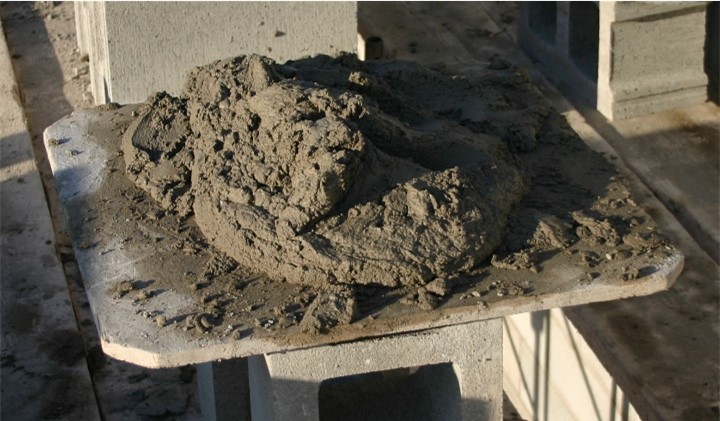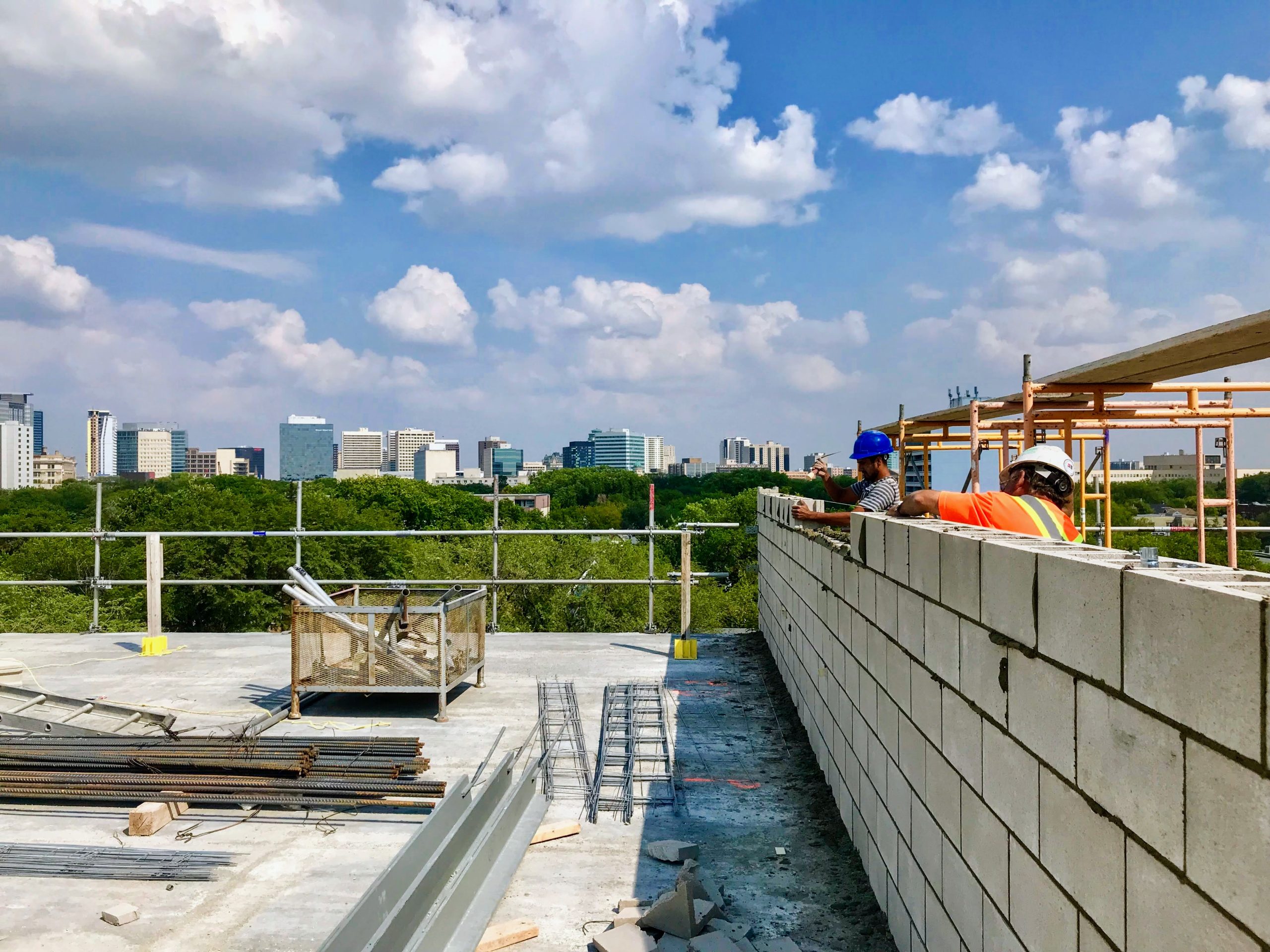
Construction Practices
This is part of a larger series of practical posts addressing common questions and concerns regarding masonry construction. These are meant to be accessible articles for contractors and design practitioners which shed some light on masonry topics, including relevant codes and standards provisions that can be applied to the topic at hand.
What are the important considerations when it comes to Hot Weather Masonry Construction?
Offering some guidance on what to focus on, and what to leave in the hands of the contractor
CMDC would like to acknowledge the AEMQ technical committee for sharing the initial seed document for these Construction Practices
Why can high temperatures have an impact?
Warm weather can pose challenges when doing masonry work. As the ambient temperature rises and materials and equipment heat up, moisture evaporates more quickly, potentially reducing the amount of water available for the mortar to work properly. This can affect the mortar’s workability or even prevent the mortar from setting and hardening properly. Heat also accelerates the hydration reaction (hardening) of the cement within the mortar and in doing so, also shortens the period of time when a mason can work with a single batch of mortar. When you add other factors such as low relative humidity, wind, and direct sunlight, the negative impact of hot weather can be more severe.
Good planning of the work and adequate preparation are necessary in order to meet the requirements of construction standards and to ensure long-term performance. The purpose of this page is to outline the requirements of CSA masonry standards that may apply during hot weather construction and to provide some guidance on best practices that will promote efficient work en durable construction.
How is mortar affected by high temperatures?
Under conditions of extreme heat, the properties of mortar may change rapidly, which can make the mason’s job of laying units and tooling the fresh joints more difficult. The two main effects of high temperatures on the fresh properties of mortar are faster absorption of water by the masonry units, and reduced workability of the mortar.

Hot weather may cause:
Fast absorption of water by the units
Bricks that have been left out in the sun during hot dry weather will become very dry and will have an increased Initial Rate of Absorption (IRA). When absorption is too fast, it can result in micro-cracking of the mortar, a lack of adhesion between the mortar and the unit or a reduction in the amount of water available for the chemical reaction that hardens the mortar.
Reduced workability of the mortar
When the weather is hot, the workability of the mortar may be reduced either due to the faster evaporation of the mixing water or through the acceleration of the reaction of the binder in the mortar. This leaves less time for the mason to lay units and tool the joints. Adding more water to the mixture after the initial mixing may be necessary in order to maintain the workability of the mortar.
What can the mason do?
Procedures to reduce the impact of hot weather
In general, masons are permitted to add more water to a mortar mix after it has been batched in order to replace the water that has been lost to evaporation. However, the requirements of applicable standards must be followed, and the mason should also check with the manufacturer for any additional requirements that may apply. When the weather is hot, the usable life of the mortar decreases and additional restrictions on how the mortar is applied to masonry units come into effect.
Remember that weather parameters should be measured at the job site. Temperature and wind-speed on the job site may be quite different than what is indicated in the weather forecast. Windbreaks and shading structures on the site may be used to help control local temperatures and wind-speeds.
CSA Standards Requirements
There is no need to reinvent the wheel when it comes to specifying what needs to be done differently, and at exactly which temperatures, when it comes to working through the hottest days of summer. The suite of masonry related CSA standards have been developed over decades and are designed to work together.
CSA A371-14
Masonry construction for buildings
When the temperature is very high, CSA A371-14 requires that the extent of the mortar placed must be limited to 1.2 m and the masonry units must be installed within one minute after the mortar is applied (CSA A371-14 clause 6.7.4). These requirements apply when either:
- The air temperature is greater than 38°C and the wind speed is below 13 km/h
- The air temperature is greater than 32°C and the air speed is greater than 13 km/h
CSA A179-14
Mortar and grout for unit masonry
Any time the ambient temperature is greater than 25°C, CSA A179-14 requires that jobsite prepared mortar must be used withing 1.5 hours after mixing (CSA A179-14 clause 6.3.1). Water can still be added to mortar that has started to lose its workability due to evaporation of the water, however any mortar remaining from a mix that is more than 1.5 hours old must be discarded.
For ready-to-use mortar (mortar that has been pre-mixed with water and set retarders, then brought to site), careful attention must be paid to the manufacturer’s instructions. Certain mortars are not permitted to have additional water added.
Other precautions to improve work in hot weather
The requirements of the standard and the minimum precautions that must be taken in order to ensure the masonry will be installed adequately and achieve the expected properties that were used for design in accordance with the design standard. Experienced masons may also choose to apply other techniques that will help them work more efficiently and will help achieve a more uniform appearance for the finished work. Here are a few additional precautions that may be taken, at the discretion of the mason:
The requirements of the standard and the minimum precautions that must be taken in order to ensure the masonry will be installed adequately and achieve the expected properties that were used for design in accordance with the design standard. Experienced masons may also choose to apply other techniques that will help them work more efficiently and will help achieve a more uniform appearance for the finished work. Here are a few additional precautions that may be taken, at the discretion of the mason:
- When possible, schedule work during the coolest part of the day, and stop work if conditions become too extreme
- Minimize exposure of materials and equipment to direct sunlight
- Use cold water to mix the mortar
- Select a mortar that provides better water retention and increased workability
- Rinse the equipment (mixer) regularly with cold water
- Use polymer mortar boards rather than wood. These have a smooth, water-repellent surface that absorbs less and will allow the mortar to keep more workability before mixing
- Clay brick units that have a high initial rate of absorption may be pre-moistened, in accordance with the manufacturer’s recommendation
- Concrete and calcium silicate units should never be pre-moistened since they expand when wet and shrink as they dry which can increase the risk of shrinkage in the wall
- In extreme drying conditions, use windbreaks, fog sprays, or wall coverings to ensure adequate moisture for proper mortar curing
It is important to note that these precautions are only applicable under certain circumstances. There are many variables at play that could affect the appropriate measure to apply, including the initial rate of absorption of the masonry units, the colour or shade of the units, the mortar composition, ambient temperature, relative humidity and wind-speed, as well as the skill and speed of a particular team of masons. An experienced mason will know which precautions should be applied for a particular scenario. Review the hot weather specifications in your contract documents and advise your client of any blanket provisions that may hinder or be detrimental to your work.
Conclusion
Many of the problems associated with masonry work in hot weather can be minimized by strictly considering good industry practices and standards. Always remember that if the mason is bothered by the heat, the masonry can be too. Experience shows that the inclusion of the advice and information in this document leads to a high-quality result and a sustainable work.



